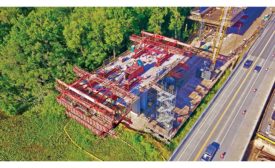Home » Keywords: » environmental
Items Tagged with 'environmental'
ARTICLES
Environmental Rule Changes Coming for Construction Sites
President Biden Orders Review of More than 100 Regulations Issued Under Trump
Read More
Transportation
Peer Review of Portland Congestion Relief Project’s Environmental Study Yields Mixed Results
Project is lauded for technical rigor, but review says ODOT still needs to work on community trust
Read More
East Coast Nor’easters Amplify Calls for Resilient Building Code Regulations
Massachusetts architects, engineers and environmental groups argue that owners should be required to implement resilient design
Read More
Environment
Senate Committee Republicans Suspend Rules, Clear EPA Nominee
GOP lawmakers' action counters Democrats' two-day boycott of vote
Read More
The latest news and information
#1 Source for Construction News, Data, Rankings, Analysis, and Commentary
JOIN ENR UNLIMITEDCopyright ©2024. All Rights Reserved BNP Media.
Design, CMS, Hosting & Web Development :: ePublishing










